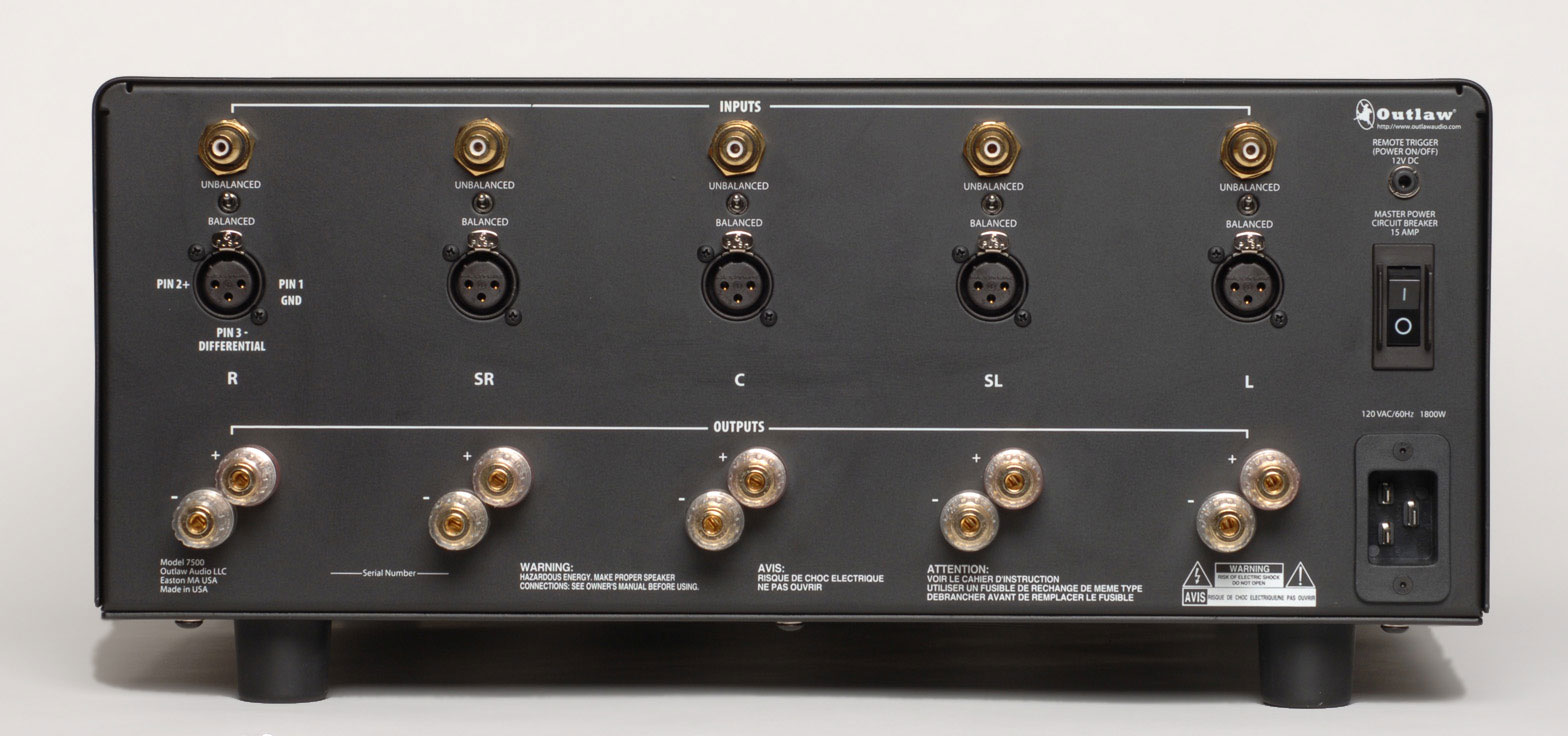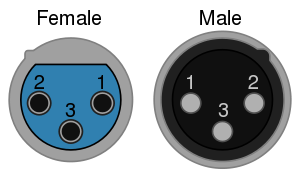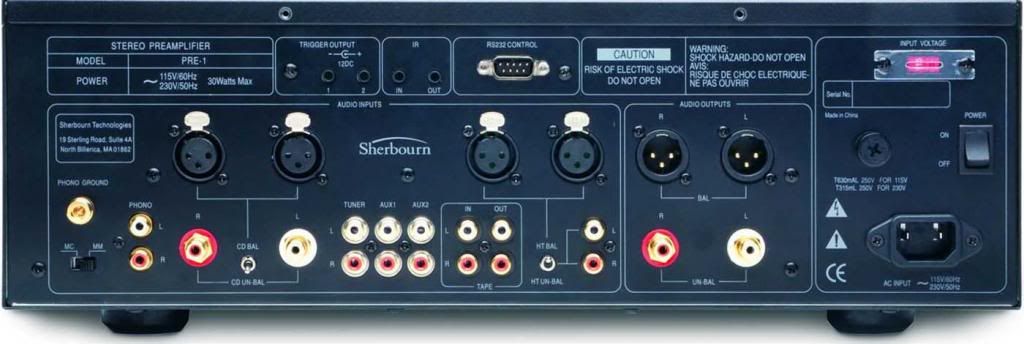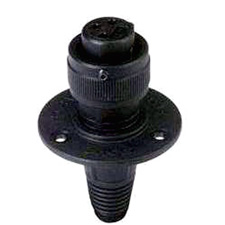Deleted
Deleted Member
Posts: 0
|
Post by Deleted on Jan 27, 2014 13:52:40 GMT -5
Why does Emotiva refuse to put locking XLR's on their XPA and XPR amps? See Emotiva, your competition do it..  |
|
|
|
Post by audiobill on Jan 27, 2014 14:01:00 GMT -5
Why, do you want to pay extra for them?
|
|
Deleted
Deleted Member
Posts: 0
|
Post by Deleted on Jan 27, 2014 14:05:49 GMT -5
Why, do you want to pay extra for them? What, an additional $2. is a big deal? I'm thinking safety and just plain quality, the locks don't cost that much. |
|
|
|
Post by Andrew Robinson on Jan 27, 2014 14:20:29 GMT -5
We don't use locking XLR connectors on our XLR compatible amplifiers because they (locking XLRs) tie into the amp's audio ground, which can cause or induce ground loop hum. Our XLR outputs are isolated from the amplifier's audio ground, thus minimizing one area where ground loop hum could become an issue.
|
|
|
|
Post by macromicroman on Jan 27, 2014 14:26:20 GMT -5
That is a very good reason not to have them.
It is always great when somebody from the manufacturing company gives their explanation for why something was or wasn't done.
Thanks Andrew.
|
|
Deleted
Deleted Member
Posts: 0
|
Post by Deleted on Jan 27, 2014 16:03:36 GMT -5
We don't use locking XLR connectors on our XLR compatible amplifiers because they (locking XLRs) tie into the amp's audio ground, which can cause or induce ground loop hum. Our XLR outputs are isolated from the amplifier's audio ground, thus minimizing one area where ground loop hum could become an issue. Oh my.. I don't believe this was an actual response from Emotiva.  Pin Function 1 Chassis ground (cable shield) 2 Positive polarity terminal for balanced audio circuits (aka "hot") 3 Negative polarity terminal for balanced circuits (aka "cold")[15] The grounding pin (1) DOES NOT INTERFERE with the locking tab. Each pin is isolated.  Emotiva is essentially saying audio amp manufactures like Crown, Crest, QSC, Lap Gruppen and Highend AV manufactures like Mark Levinson have been selling inferior amplifiers to consumers for years because they use locking XLR. According to Andrews replay "(locking XLRs) tie into the amp's audio ground, which can cause or induce ground loop hum", the amps from the companies I mentioned should be humming and buzzing away like crazy.   |
|
|
|
Post by Priapulus on Jan 27, 2014 16:44:55 GMT -5
I recently bought an xdr-1. xsp-1 and xpa-1 which use XLRs. Some of them lock; but to my disappointment, some don't...
|
|
|
|
Post by moko on Jan 27, 2014 16:45:27 GMT -5
i thought it's a bit odd too cause sherbourne use them in their preamp.  maybe you have to ask lonnie first so he can put them like in xpa-1L   |
|
|
|
Post by geebo on Jan 27, 2014 16:49:18 GMT -5
Emotiva is essentially saying audio amp manufactures like Crown, Crest, QSC, Lap Gruppen and Highend AV manufactures like Mark Levinson have been selling inferior amplifiers to consumers for years because they use locking XLR. According to Andrews replay "(locking XLRs) tie into the amp's audio ground, which can cause or induce ground loop hum", the amps from the companies I mentioned should be humming and buzzing away like crazy. They're not saying anything of the sort. Those that you mentioned may not isolate the XLR outputs from the amp's audio ground. Many XLR's have a fourth lug connected to the shell that gets connected to the ground pin internally so pin 1 and the shell get tied together electrically. If your case ground and audio ground are isolated, you want to keep them that way. I think that may be what Andrew was trying to convey but I could be wrong. I know that when I recently made some XLR cables the connectors had the fourth lug and I wondered what to do with it. All the cables I owned did not have pin one tied to the shell and when I googled the question I found the preferred connection method was to leave pin one and the shell lug disconnected from one another. |
|
|
|
Post by Andrew Robinson on Jan 27, 2014 17:53:05 GMT -5
With regards to Sherbourn, understand that it (Sherbourn) existed as a company/brand long before Emotiva acquired it, so engineering decisions made pre purchase were done apart from Emotiva.
As for the XPA-1L's locking XLR, you are correct, it does have one. However, it has been modified NOT to ground to the chassis unlike similar XLRs. In truth we'd like to switch to a locking XLR and are using the XPA-1L as an experiment to see if it is cost effective to do so, knowing we have to modify each XLR jack by hand since none are pre-designed to not ground to the chassis they're installed in. The XPA-1L is not a high volume product so it's easy for us to weigh the pros and cons of such a change elsewhere in our lineup. But the locking XLR jack on the XPA-1L has been modified to curb hum.
|
|
|
|
Post by doc1963 on Jan 27, 2014 18:39:05 GMT -5
Well... To ask a simple question, for home audio purposes, what's the difference? All of my XLR connections fit securely and my amps are backed into my rack where there's no risk of any of them being tugged out. And... they're dead silent.
Pro audio, yes, I can see the definite need, but for home audio, what's the point...?
|
|
KeithL
Administrator   
Posts: 10,273
|
Post by KeithL on Jan 27, 2014 19:01:09 GMT -5
Actually, whether grounding the ground pin on the input connector is problematic or beneficial depends on the internal topology of the amplifier - so grounding the ground pin directly to the chassis works well for some designs and very poorly for others.  We don't use locking XLR connectors on our XLR compatible amplifiers because they (locking XLRs) tie into the amp's audio ground, which can cause or induce ground loop hum. Our XLR outputs are isolated from the amplifier's audio ground, thus minimizing one area where ground loop hum could become an issue. Oh my.. I don't believe this was an actual response from Emotiva.  Pin Function 1 Chassis ground (cable shield) 2 Positive polarity terminal for balanced audio circuits (aka "hot") 3 Negative polarity terminal for balanced circuits (aka "cold")[15] The grounding pin (1) DOES NOT INTERFERE with the locking tab. Each pin is isolated.  Emotiva is essentially saying audio amp manufactures like Crown, Crest, QSC, Lap Gruppen and Highend AV manufactures like Mark Levinson have been selling inferior amplifiers to consumers for years because they use locking XLR. According to Andrews replay "(locking XLRs) tie into the amp's audio ground, which can cause or induce ground loop hum", the amps from the companies I mentioned should be humming and buzzing away like crazy.   |
|
|
|
Post by Gary Cook on Jan 27, 2014 22:05:17 GMT -5
In a professional environment locking XLR cables have both advantages and disadvantages. The advantage is pretty simple, they lock so the cables don't fall out. The disadvantages (like locking banana plugs) are they lock so if the cables get a good pull, trip, fall, yank etc the equipment and/or the cable itself can get damaged. The other disadvantage is a lack of consistency in wiring of both the XLR cables themselves and the internal wiring within the equipment itself. As a result I have ended up with ground loop issues that are hard to trace within what can be kilometres of XLR cabling.
Cheers
Gary
|
|
|
|
Post by Priapulus on Jan 27, 2014 22:49:32 GMT -5
We don't use locking XLR connectors on our XLR compatible amplifiers because they (locking XLRs) tie into the amp's audio ground, which can cause or induce ground loop hum. Our XLR outputs are isolated from the amplifier's audio ground, thus minimizing one area where ground loop hum could become an issue. I got a ground loop by plugging in the Trigger wire. |
|
|
|
Post by solidstate on Jan 28, 2014 2:12:21 GMT -5
|
|
|
|
Post by solidstate on Jan 28, 2014 2:27:27 GMT -5
We don't use locking XLR connectors on our XLR compatible amplifiers because they (locking XLRs) tie into the amp's audio ground, which can cause or induce ground loop hum. Our XLR outputs are isolated from the amplifier's audio ground, thus minimizing one area where ground loop hum could become an issue. Oh my.. I don't believe this was an actual response from Emotiva.  Pin Function 1 Chassis ground (cable shield) 2 Positive polarity terminal for balanced audio circuits (aka "hot") 3 Negative polarity terminal for balanced circuits (aka "cold")[15] The grounding pin (1) DOES NOT INTERFERE with the locking tab. Each pin is isolated. Emotiva is essentially saying audio amp manufactures like Crown, Crest, QSC, Lap Gruppen and Highend AV manufactures like Mark Levinson have been selling inferior amplifiers to consumers for years because they use locking XLR. According to Andrews replay "(locking XLRs) tie into the amp's audio ground, which can cause or induce ground loop hum", the amps from the companies I mentioned should be humming and buzzing away like crazy. It's absolutely POINTLESS to use a differential hookup to 90% of Emotiva's amps because they are NOT DIFFERENTIAL. All you are doing is feeding a ballsie and probably hurting the SQ. Now that Outlaw/ATI is a TRULY DIFFERENTIAL AMPLIFIER end to end so it would be foolish to feed it a single ended source. Hey I'm curious... Does the XMC-1 has TRULY DIFFERENTIAL outs or is it only for channel 1/2? PS I'm thinking it's only channel's 1/2 due to PCB space limitations |
|
|
|
Post by solidstate on Jan 28, 2014 2:29:47 GMT -5
We don't use locking XLR connectors on our XLR compatible amplifiers because they (locking XLRs) tie into the amp's audio ground, which can cause or induce ground loop hum. Our XLR outputs are isolated from the amplifier's audio ground, thus minimizing one area where ground loop hum could become an issue. I got a ground loop by plugging in the Trigger wire. That's BS and shouldn't happen. Those should be optically isolated! The trigger PCB on my UPA-1s are optically isolated. What model amp do you have? |
|
hemster
Global Moderator    Particle Manufacturer
...still listening... still watching
Particle Manufacturer
...still listening... still watching
Posts: 51,951
|
Post by hemster on Jan 28, 2014 2:31:36 GMT -5
Apart from the lock pin tab method there are other ways to mechanically secure the connector: 
Using a screw cap | 
Using a lug nut |
While commonly used in commercial applications, I'm not convinced of their value in home use situations. |
|
|
|
Post by Topend on Jan 28, 2014 5:02:41 GMT -5
Why is it so desirable to have locking XLR connectors on a home system? The cables are usually out of the way where they can't be inadvertently dislodged.
Dave.
|
|
|
|
Post by fsubales on Jan 28, 2014 9:04:05 GMT -5
Some of my amps are in tough to reach spots, I feel the locking XLRs just add an extra unnecessary step to remove the cables for home audio. So far non of mine have jumped/fell out.
|
|

